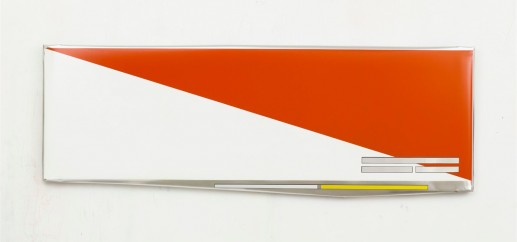HAN SCHUIL
Paintings / Gemälde
Opening: Friday, 15th April, 6 pm
Exhibition Dates: 15th April – 28th May 2011
Hamish Morrison is delighted to present an exhibition of new works by the Dutch painter Han Schuil. This is his first solo show with the gallery, and his first in Berlin.
Schuil is one of Hollandʼs most important contemporary painters. In 2000, he had a major mid-career retrospective at the Stedelijk Museum, Amsterdam. In his Foreword to the accompanying exhibition catalogue, Rudi Fuchs stated that: “It is curious that details…carry a special weight in the Dutch tradition…It is that compactness and tension…that Schuilʼs paintings also offer.” Like the greatest Dutch paintings, Schuilʼs work aspires to establish what he describes as an “intense simplicity”; something that runs through his countryʼs art history from Van Eyck and Vermeer to contemporary figures like Rene Daniels.
Schuil takes fleeting images and everyday motifs – a building, a repair in the road, or, famously, a Batman mask hanging on the door of a WC – and turns them into paintings that demand time and stillness from viewers. They also demand the same things from the artist: as he works slowly, each painting gradually develops its own identity, at some distance from the original image but always inextricably linked to it. He describes this as his workʼs “signaling” effect. He uses everyday forms as a lure, a way to hook viewers on the image. And once he has caught them, a more complex dialogue about painting takes over from the brazenness of his found image. In his words, his works have “the bang of a traffic sign and the intensity of a Flemish primitive”.
Schuil borrows freely from the histories of abstraction and figuration, drawing no distinction between the two. His recent works encapsulate this approach perfectly. One of the dominant motifs is a cartoon eye. It is a ubiquitous, comforting image that we identify with a range of childish traditions, from Disney to Manga. It is also anonymous; we donʼt know what precise character, if any, Schuil has taken it from. But in his hands, it also becomes all seeing, like the eye that follows us when we walk away from a Vermeer or a Rembrandt. It could also simply be interpreted as an abstract form. The allover pattern that features in several of his new paintings plays a similar game. On the one hand, it could be abstract, but it also evokes broken eggshells, bloodshot eyes, or the cracked glaze of an Old Master painting. And in his “Blast” paintings, he freezes an explosion: a Big Bang at the heart of his work that also brings to mind the cheap advertising signs used in butcherʼs windows or clothing stores to announce the latest special. For German viewers, the explosion is eerily similar to Stern’s logo: an unintended consequence, but one that illustrates the many lives Schuil’s works can have.
This idea of the crash or explosion carries over into three dimensions in Schuilʼs paintings. He often paints on bent aluminium boxes that push out from the walls and into the gallery space. In using these boxes, Schuil isnʼt critiquing the relationship between the painted surface and its support, or examining the line between painting and sculpture. Rather he sees the boxes, with their dents and imperfections, as integral parts of the images he creates. A car doesnʼt stop being a car once it is dented, even though the carʼs beauty is altered by the impact. Schuilʼs dented surfaces have a similarly transformative effect: they change his images, but they are still images all the same. In another clever transformation, Schuilʼs use of powdery colours often makes the aluminium look like crumpled cardboard, or paper.
Ultimately, Schuilʼs paintings arenʼt a critique of modernism or abstraction, or even of our contemporary society. Rather, his works are quiet engagements with the history of painting and the role it plays in our lives. He forces us to think about how images function in our fast-paced world, and shows us that painting still has the power to stop us in our tracks.
Han Schuil was born in Voorschoten, The Netherlands, in 1958. His work has been shown extensively around the world, including at public institutions in Europe, South America and Asia. His work is held in almost every major private collection in The Netherlands, including AEGON and ABN AMRO as well as many of the countryʼs museums such as Stedelijk Museum Amsterdam. He lives and works in Amsterdam.
A comprehensive catalogue with a text by Ulrich Loock, designed by Rutger Fuchs has also been published in conjunction with the exhibition.
Hamish Morrison Galerie
www.hamishmorrison.com
